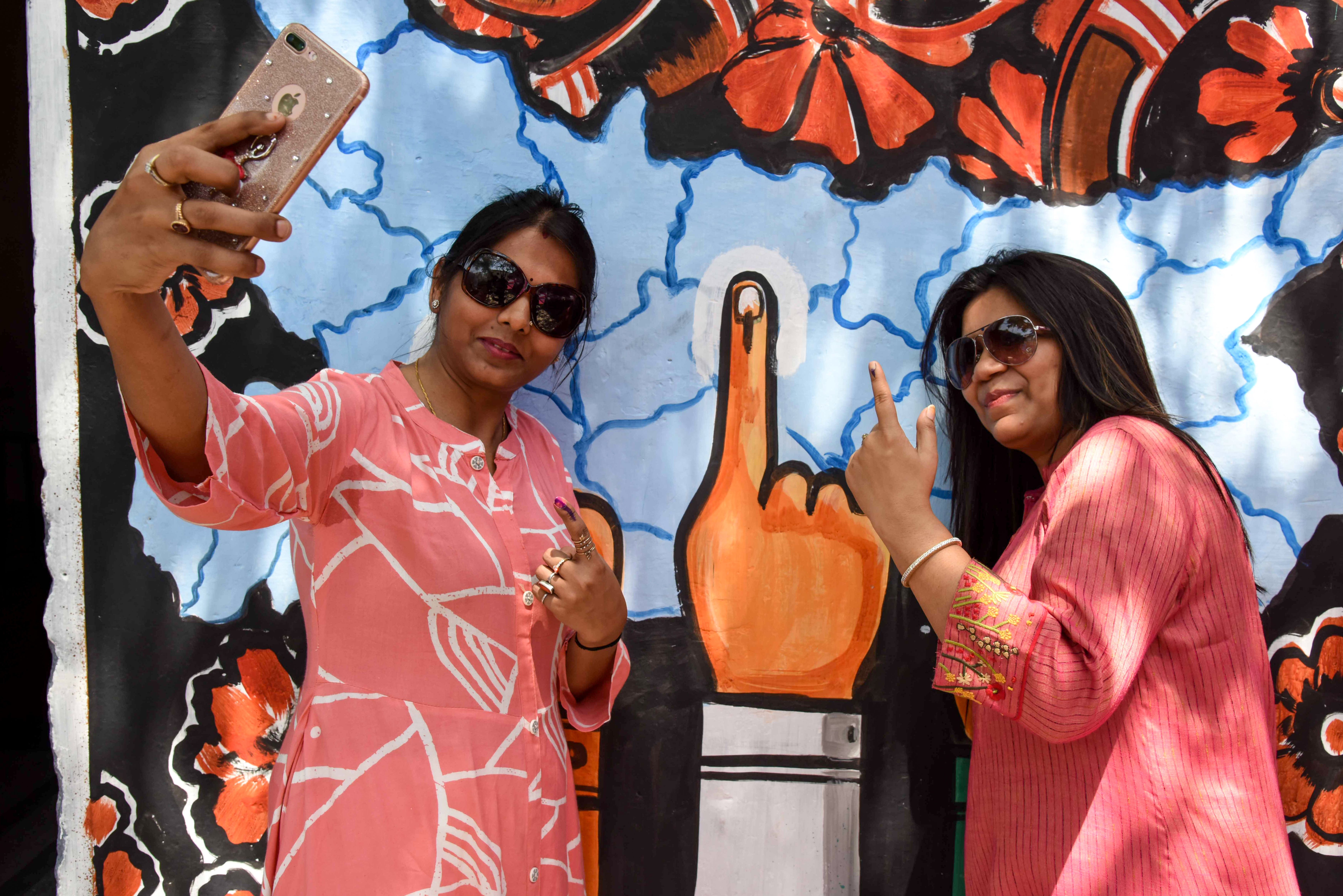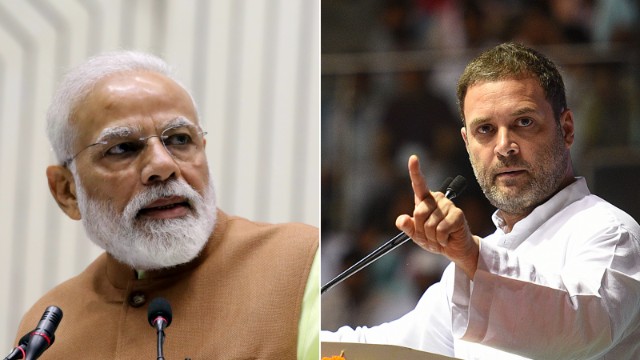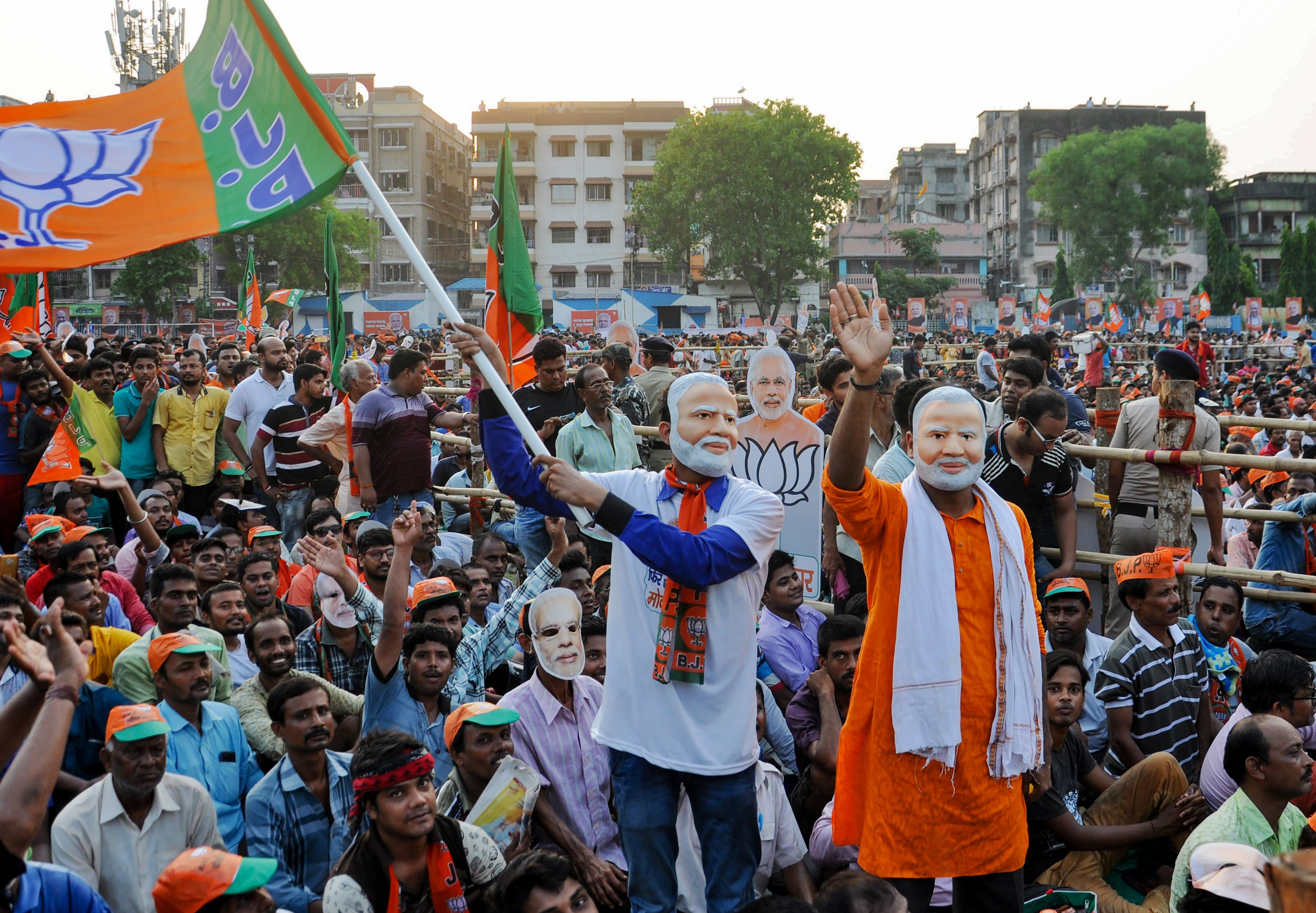India has made history over the course of its elections, with the highest ever voter turnout at an interim 67.10%
In 2014, voter turnout was 66.44%.
By Helen Regan, Nikhil Kumar, Manveena Suri, Swati Gupta, Sugam Pokharel, Steve George, Omar Khan, Rishi Iyengar and Sam Kiley, CNN
India has made history over the course of its elections, with the highest ever voter turnout at an interim 67.10%
In 2014, voter turnout was 66.44%.
From CNN's Nikhil Kumar

Among Modi's big achievements when he first ran for national office in 2014 was turning what is a parliamentary political contest into a presidential style showdown.
Indians vote for their local constituency parliamentary members (MPs), and the party that ends up with the largest number of MPs gets to choose the Prime Minister.
But five years ago, Modi made the election all about himself and what he would do if he won.
This time round, the BJP campaign presented the election as a binary choice for voters: Whether they were for or against Modi. Backed by a ground campaign operation and publicity machine that has been years in the making, overseen by BJP president and Modi’s closest political ally Amit Shah, Modi has successfully built a cult of personality that opposition parties, including the principal opposition Congress led by Rahul Gandhi, have struggled to counter.
The Congress focused it’s campaign on what the party said was Modi’s failure to deliver on the promises he made in 2014, principally on the economy. Instead, as an alternative, it promised minimum income guarantee for poor Indians, while also saying that it would work to protect India’s diversity in the face of threats from divisive right wing Hindus.
From CNN's Nikhil Kumar and Rishi Iyengar

Nationalism
It has been a polarising election during which Modi and the BJP portrayed the incumbent less as an economic reformer -- the main message in the 2014 elections that first brought Modi to national office -- and more as a muscular nationalist firmly rooted in the Hindu right wing movement, a turn that made many liberals and minority Indians nervous.
Defense
A military standoff with Muslim majority Pakistan just weeks before polling was seen as boosting the BJP’s campaign. The trigger was a terrorist attack on Indian forces in the disputed Kashmir region in February. The bombing was followed by the first aerial confrontation between the countries in several decades, something that was held up by Modi’s allies as proof that he was only leader who could effectively respond to terror threats that Delhi says emanate from Pakistani soil, a claim refuted by Islamabad.
Jobs
Modi's 2014 victory was in part due to his promises to overhaul India's economy and generate jobs for young people, around 12 million of whom enter the workforce every year. But experts say the situation has only gotten worse: New figures from the independent researchers at the Center for Monitoring Indian Economy (CMIE) show that joblessness is rising. And a leaked five-yearly survey, published in the Business Standard, reported that India's unemployment rate had risen to its highest in 45 years. The government has not released the figures.
Economy
In 2014 Modi swept to power, in part, on a promise of economic renewal. India has the world's fastest-growing major economy -- overtaking China in 2015 -- and the country's gross domestic product is forecast to be nearly $1 trillion bigger this year than in 2014.
But there has been a deceleration in recent years, with the biggest hit to growth resulting from some of Modi's signature policies: Demonetization and the goods and service tax.
In November 2016, he abruptly banned the two biggest banknotes in circulation, making 86% of the country's cash worthless.
While the aim was to crack down on black money and tax evasion -- which many experts said was misguided, given that most untaxed wealth is not believed to be stored in cash -- the move wreaked havoc in the cash-dependent economy and brought several sectors to a halt.
A massive overhaul of India's tax system a few months later hit the economy even harder, as businesses still reeling from the cash ban struggled to cope with the changeover.
Although expected to help India's economy become more efficient in the longer term, the way the changes have been implemented has hurt many small businesses.
Read more here.
From CNN's Manveena Suri and Helen Regan

Prime Minister Narendra Modi could be poised to win a second term based on exit poll results released soon after polls closed on Sunday.
Exit polls, conducted by local media, put Modi’s ruling Bharatiya Janata Party (BJP) and its National Democratic Alliance (NDA) coalition as winning a clear majority.
Modi’s BJP has been fighting it out for the votes of 900 million people against the main opposition Congress Party, led by political scion Rahul Gandhi, and other big regional players, over the course of six weeks of polling.
In the past, Indian exit polls have proved unreliable in predicting precise seat tallies, both in national and state elections, given the size of the electorate and the regional variations across the country.
In order to win, a party or a coalition needs to secure 272 seats out of 543 in the Lok Sabha, or lower house of parliament to form a government.
In 2014 most polls did, however, correctly put the NDA as on track to secure a majority. Modi’s party swept to power by winning 282 seats in what was the biggest majority secured by a single party in 30 years. With its allies, the coalition racked up 336 seats.
Soon after the release of exit poll numbers on Sunday evening, several opposition leaders dismissed the numbers, citing their unreliability.
Chandrababu Naidu, chief minister of southern Andhra Pradesh state and president of the Telugu Desam Party, tweeted, “Time and again exit polls have failed to catch the People’s pulse."
Shashi Tharoor, a Congress Party lawmaker for Thiruvananthapuram constituency in the southern state of Kerala referred to the recent exit poll-defying results of the Australian elections.
Mamata Banerjee, chief minister of the eastern state of West Bengal and head of the Trinamool Congress, tweeted, “I don’t trust exit poll gossip" and appealed to "all opposition parties to be united, strong and bold."
Read more on that here.

After five and a half weeks of polling over seven phases, countless campaign rallies spanning the length and breadth of the country, and an electorate the size of 900 million casting ballots at 1 million polling stations, India's marathon election will soon be over.
When will results be announced?
Counting starts at about 8 a.m. local time (10:30 p.m. ET), when the Election Commission (EC) will start posting results on its website. It's unclear what time the full results will be known, but in 2014 the general trend became clear by about 3 p.m., though it could be much later.
The EC won’t certify numbers until every seat has been counted, a process that could take a day or longer, especially if there is a hung parliament.
Once a clear winner is determined, India's President Ram Nath Kovind will invite the winner to form a government.
The swearing in ceremony would take place over the next week or so.
What to watch for?
It's a first past the post system and so in order to win, a party or a coalition needs to secure 272 seats out of 543 in the Lok Sabha, or lower house of parliament, to form a government.
Just catching up?
Prime Minister Narendra Modi is hoping to repeat his landslide win of 2014 with his Bharatiya Janata Party (BJP). Then the BJP won 282 seats in the Lok Sabha, the largest majority commanded by a single party in 30 years. With its allies the NDA, the party sailed comfortably past the 300 mark -- a reflection of the popularity of its leader.
While Modi still enjoys a lot of support from around the country, the elections are essentially a referendum on his policies over the past five years. A lack of jobs, an agrarian crisis, a rise in right-wing Hindu nationalism, and some of his major economic policies have turned many people off the populist leader.
Though considered by many to be a weak opposition, Congress Party leader Rahul Gandhi is Modi's main rival, and regional parties could also post strong showings.






